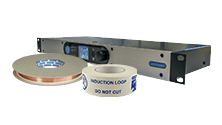
In 2025, accessibility in Europe takes a major step forward. The European Accessibility Act (EAA) is set to come into force, introducing clear requirements to ensure that products and services are accessible to all including people with hearing loss. For public venues, system integrators, and accessibility advocates, this marks both a challenge and an opportunity: to make inclusive audio a standard, not a luxury.
What Is the EU Accessibility Act?
The European Accessibility Act (Directive (EU) 2019/882) is a directive designed to remove barriers for people with disabilities across the European Union. It harmonises accessibility requirements for a wide range of products and services, including transport ticketing machines, ATMs, banking services, e-commerce, and crucially for our sector, communication technologies, audiovisual media, and public information systems.
Although adopted in 2019, EU Member States must ensure full compliance by 28 June 2025. From this date, many services offered to the public must be accessible or face penalties and reputational damage.
Who Needs to Comply?
The EAA affects both public and private organisations offering services within the EU, particularly those in:
- Transport (airports, rail stations, bus terminals)
- Retail and banking
- Hospitality and tourism
- Cultural and civic spaces (museums, theatres, town halls, places of worship)
- Event and conference venues
If your space provides audio-based public information or customer service, you will likely need to demonstrate how that information is accessible to people who are deaf or hard of hearing.
The European Commission provides implementation guidance to help affected sectors understand their obligations.
Why Assistive Listening Systems Are Essential
Roughly 20% of people in Europe experience some form of hearing loss. For them, accessing spoken announcements or information in noisy, complex environments can be incredibly difficult.
Assistive listening systems (ALS) – such as hearing loops, infrared (IR), radio frequency (RF/FM), audio-over-WiFi, and Bluetooth-based broadcast solutions (AuracastTM) overcome these challenges by transmitting sound directly to hearing aids, cochlear implants, or dedicated receivers. These technologies aren’t just beneficial: under the EAA, they may be required in order to comply with accessibility standards.
Installing the right system depends on your building, use case, and visitors' needs which is where we can help.
How Ampetronic | Listen Technologies Can Help
With a combined experience of over 60 years in designing and delivering assistive listening systems, Ampetronic | Listen Technologies provide complete, compliant solutions across every environment.
Whether you’re planning:
- A discreet installation in a historic venue
- A large-scale deployment in a transport terminal
- Multilingual solutions for guided tours
- Wireless audio broadcasting to hearing aids or smartphones
…our team can support you through system design, specification, installation, and long-term support.
We also ensure our solutions align with relevant standards, such as IEC 60118-4 for hearing loop systems, giving you confidence in both performance and compliance.
Take the Next Step
If you’re unsure whether your venue or services are ready for the 2025 EAA deadline, now is the time to act. A brief consultation can identify gaps, opportunities, and the most effective way to futureproof your accessibility.
Contact us today and let’s create spaces where everyone can hear clearly and belong fully.


